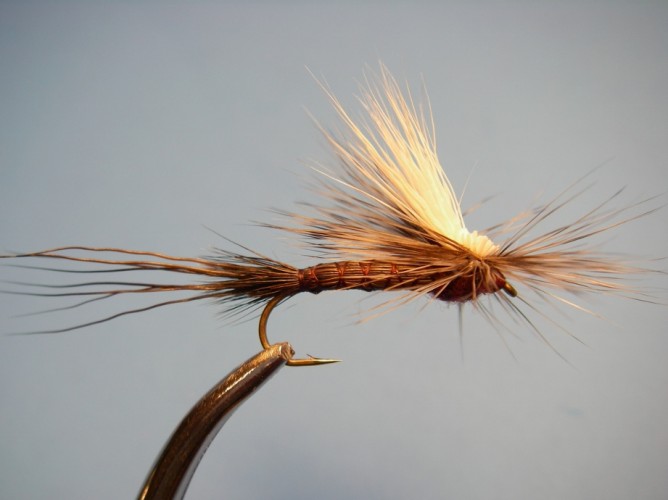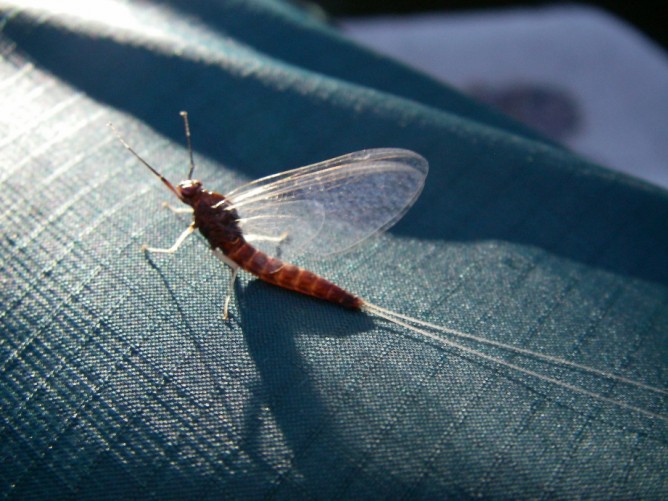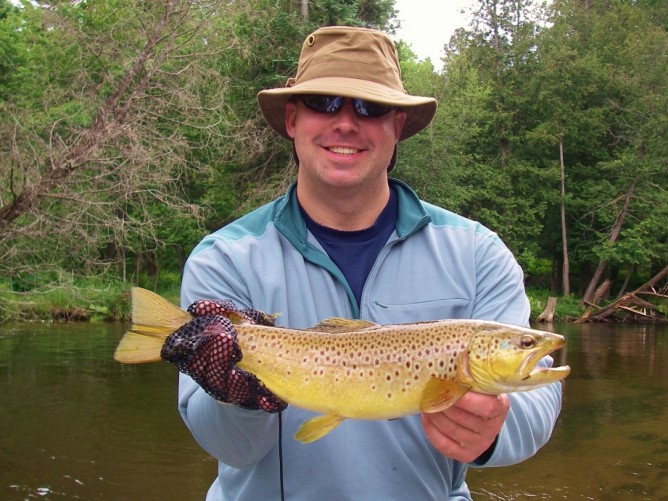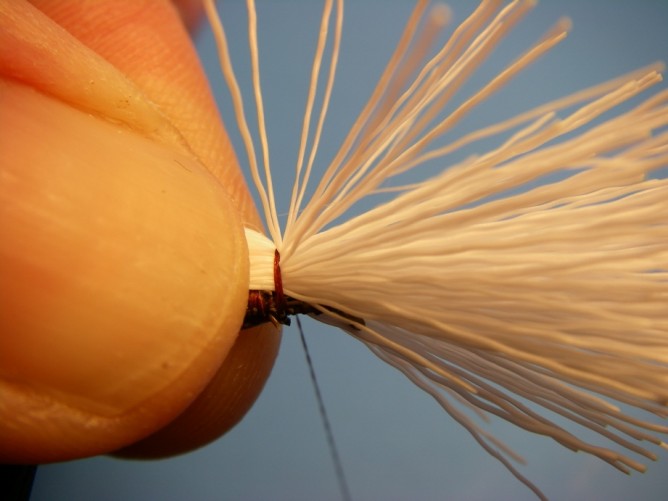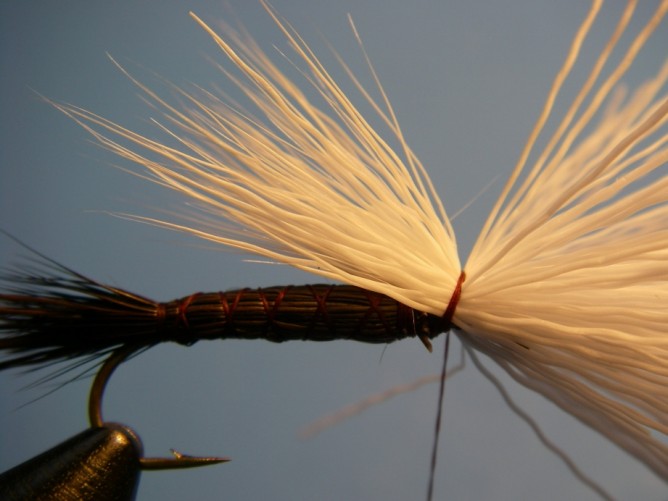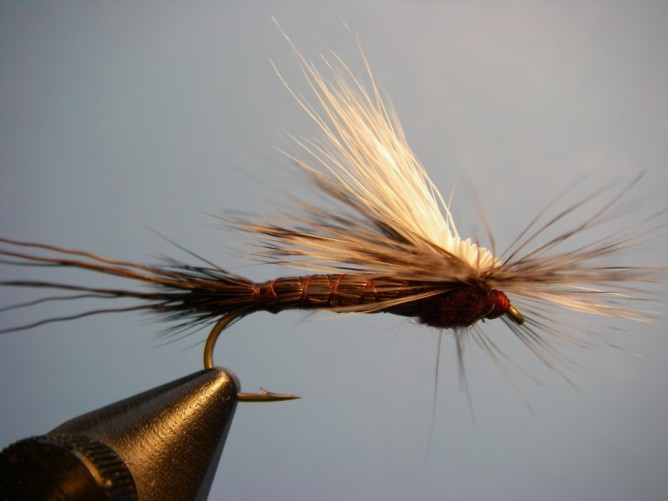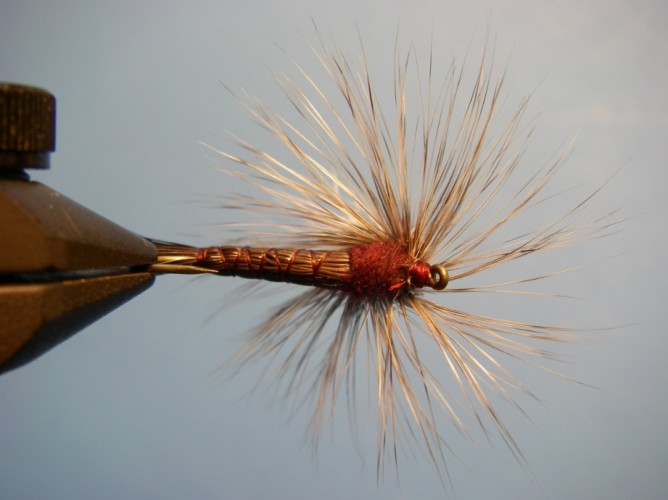While the “hex” mayfly gets the bulk of praise and attention from Michigan anglers, there is another mayfly that gets my praise. The Isonychia emerges over a longer period of time, is easier to cast, and doesn’t wait until dark to show – what’s not to like? Having a number of names Iso, Slate Drake, White Gloved Howdy, Maroon Dun among others, it should be thought of as important and should be found in any Michigan trout angler’s fly box from June through September.
There are two genus of the Isonychia (Salderi and Bicolor) which inhabit many of our local rivers. Each have different characteristics. Rather than give you a taxonomical description or bore you with entomology, let me provide you with the brass tacks:
The nymphs love swift water in gravel sections, adults/duns range in size with the most common being 10-14, adults/duns bodies vary in color between the two genus and the particular river (from a light creamy olive, to tan, to a brown-mahogany color), Adults/duns have deep dun colored wings where spinners have dark maroon bodies with clear wings, and both duns and spinner have distinct white front legs making them easy to identify. The largest concentration and emergence is in June extending through mid-September with the first insects large in size and tend to get smaller through that time period.
The duns typically emerge in the evening, but they can be found on the water at almost all times of the day, especially in the later months and when cloud cover is present. Spinners, too, typically congregate in swarms in the evening before they fall to the water’s edge to drop eggs in riffle sections of rivers. For years it was thought that Iso nymphs only climb onto shore before emerging, but it is now accepted that they emerge in mid-stream as well – trout have known that for years.
The Tilt-Shoot Iso is a pattern I created and have been using the past 10 years with great success. While it isn’t the easiest fly to tie for those unfamiliar with hair body patterns, you will find vast improvements after a number of attempts.
This version of a parachute provides a realistic silhouette of the wing while the pattern sits low in the water for fish to easily see — important when fishing broken water. You can change the body color by changing the thread color to tan or olive, and its worth tying some with a more natural gray color wing/post. Tie this pattern in smaller sizes and you will find it will work as an imitation for a number of mayfly spinners.
Ted’s Tilt-Shoot Iso is available from Rainy’s Flies and can be bought in stocking fly shops. Below are tying instructions for you fly tiers.
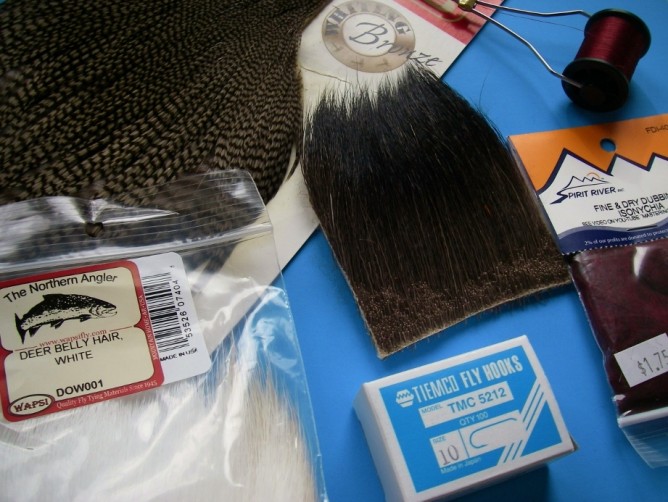
Tilt-Shoot Iso Recipe
Hook: TMC 5212 10 – 14
Thread: Uni-6/0 Wine
Tail: Moose Body
Body: Moose Body
Post: Deer Belly Hair – White
Hackle: Grizzly Dyed Dun
Thorax: Fine & Dry Dubbing – Isonychia
Tying Instructions
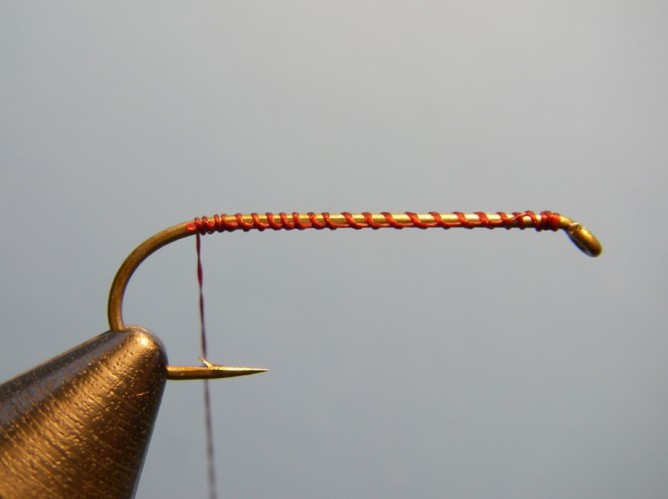
Step 1. Place hook (size 10) in vise and wrap a thread base from behind the eye to above the barb.
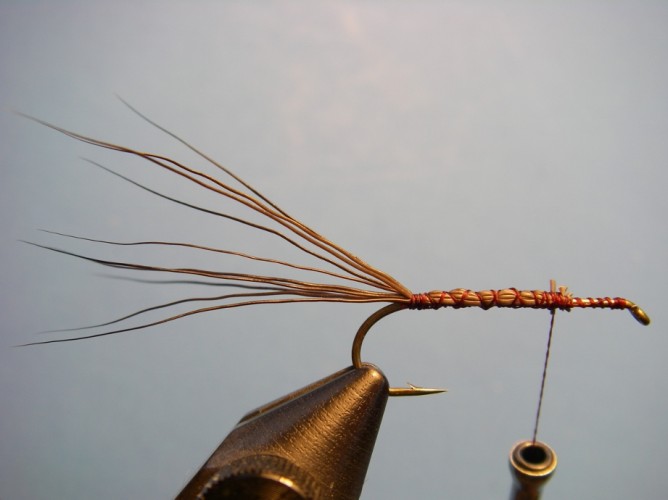
Step 2. Cut 6 – 8 moose body hairs, clean and stack/even them and tie in on top of the hook about
one hook gape’s distance behind the eye. Tie down along the shank to above the hook barb and back again.
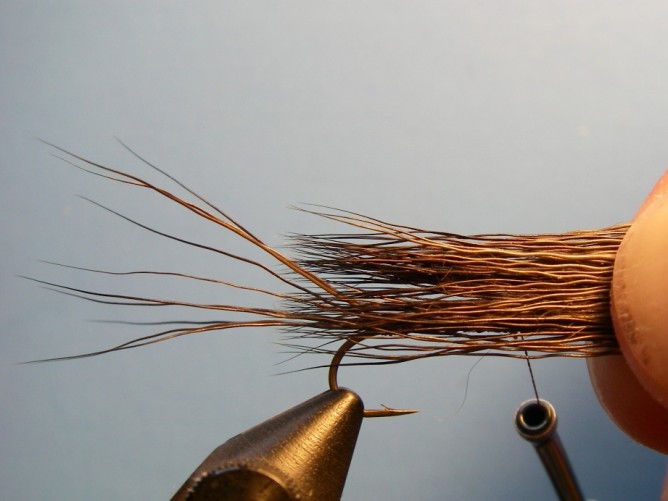
Step 3. Cut a large clump of moose body hair (approx. the thickness of two wooden match sticks), clean and stack/even. Measure the hair by laying the clump along the hook where the tips extend just beyond the hook shank. Trim the butt ends so the body will extend from the where we tied the tail in to just beyond the shank.
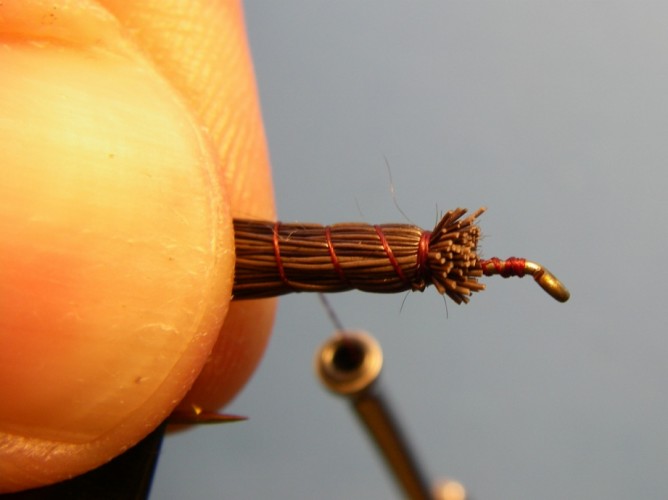
Step 4. Lay the clump of moose along the hook making sure it completely surrounds the hook
shank for complete coverage. After a few wraps to secure it in place, hold the moose taught with your
left hand as you wrap the thread towards the hook bend with the bobbin in your right hand.
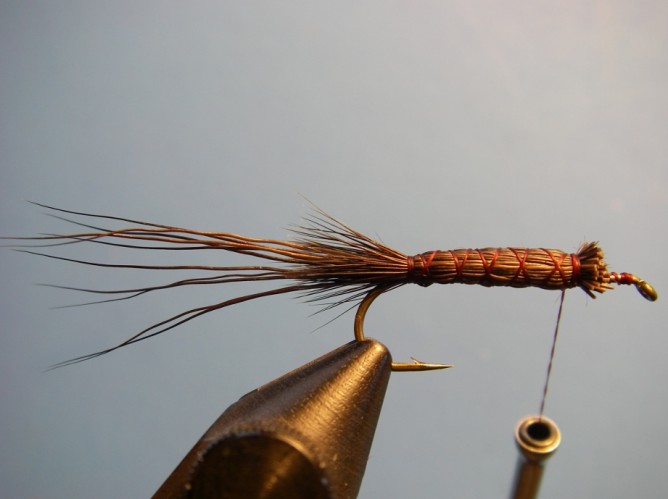
Step 5. Take the thread wraps to above the barb and make two tight wraps to secure
and then wrap the thread back toward the hook eye crisscrossing the thread
wraps making an X pattern. Once secured, trim off any excess butt material.
Step 6. Select a clump of deer belly hair for the post/wing (approximately the thickness of three match sticks). Clean and stack/even it. Lay the hair on top of the hook so the natural points extend to the end of the body.
Tie in the post/wing where the moose body ends and do not trim the butt ends of the hair.
Because the hair is hollow it can easily be cut by too much thread pressure.
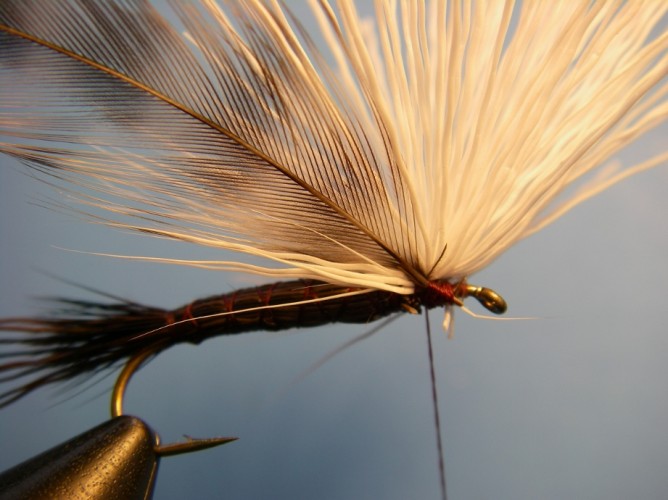
Step 7. Pull both the tips and the butts up and wrap along the shank to encourage the hair to move upward. Tie in a hackle feather at the base of the post/wing with the dull side of the feather facing you. The feather, after being wrapped, should extend to the end of the X-wraps on the body.
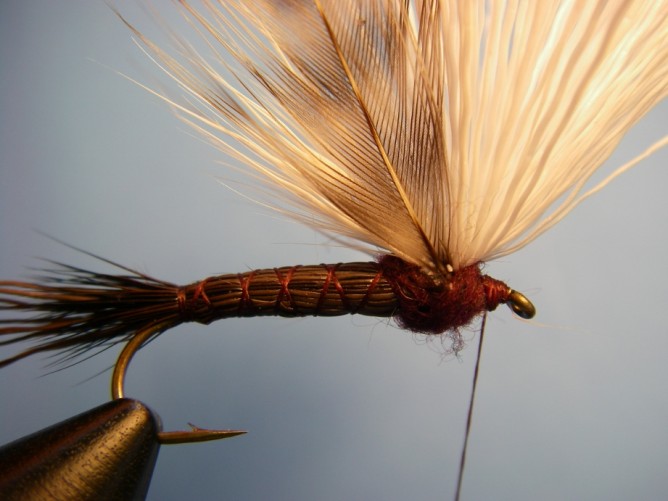
Step 8. Dub a tight thorax on both sides of the post/wing that is slightly
thicker than the body/abdomen also encouraging the post/wing upward.
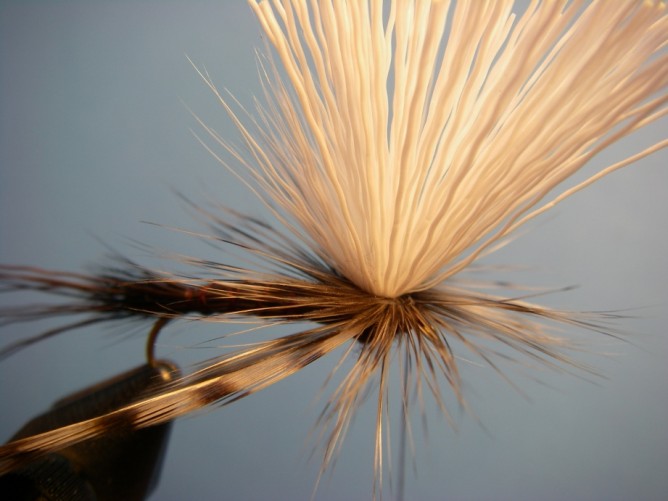
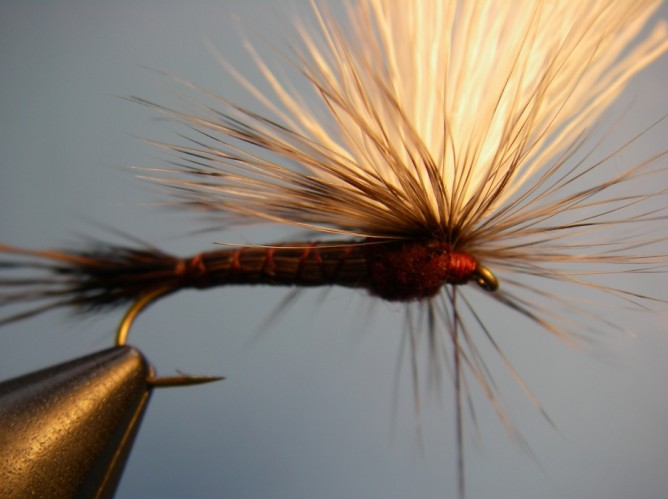
Step 9. Wrap the hackle parachute style under both the tips and butts of the post/wing.
Wrap the hackle firmly and it will compress and seat nicely against the post
creating a durable hackling. Tie off between the hook eye and dubbing.
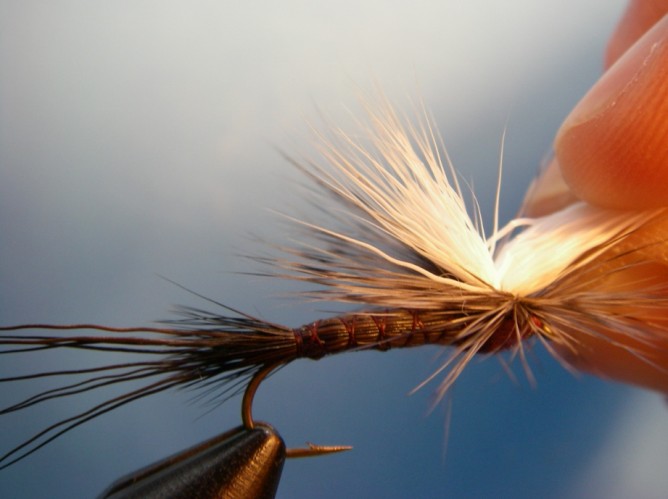
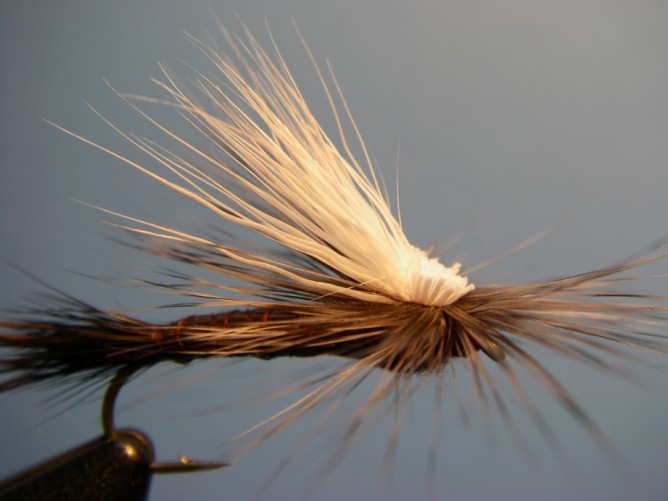
Step 10. Pull the butt ends of the wing/post forward and trim only the
butts close to the base, just above the hackle.
Step 11. Apply a drop of thin head cement at the base of the post and the thread head.
Finished Tilt-Shoot Iso Isonychia fly pattern

